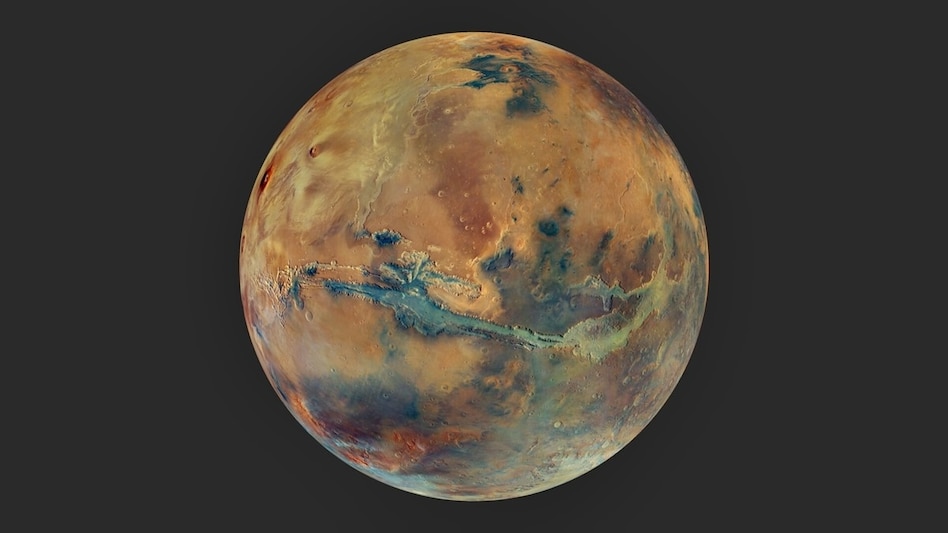 The study’s authors say the water ice most likely to form subsurface pools would exist in Mars’ tropics, between 30 degrees and 60 degrees latitude, in both the northern and southern hemispheres.
The study’s authors say the water ice most likely to form subsurface pools would exist in Mars’ tropics, between 30 degrees and 60 degrees latitude, in both the northern and southern hemispheres.  The study’s authors say the water ice most likely to form subsurface pools would exist in Mars’ tropics, between 30 degrees and 60 degrees latitude, in both the northern and southern hemispheres.
The study’s authors say the water ice most likely to form subsurface pools would exist in Mars’ tropics, between 30 degrees and 60 degrees latitude, in both the northern and southern hemispheres. Mars, also known as the Red Planet, is yet to show signs of life due to its harsh conditions but a new NASA study proposes that microbial life could exist beneath the frozen surface of Mars, hidden in pools of meltwater.
The study’s authors have shown that the amount of sunlight that can shine through water ice would be enough for photosynthesis to occur in shallow pools of meltwater below the surface of that ice.
Lead author of the study, Aditya Khuller of Nasa's Jet Propulsion Laboratory emphasised the significance of this discovery, stating, "Martian ice exposures are probably one of the most accessible places we should be looking" for extraterrestrial life.
The study, which is published in Nature Communications Earth & Environment, focused on water ice formed from ancient snow mixed with dust during Martian ice ages. Researchers found that dark dust particles within the ice could absorb sunlight, potentially causing melting up to several feet below the surface.
Although dust particles may obscure light in deeper layers of the ice, they are key to explaining how subsurface pools of water could form within ice when exposed to the Sun. Dark dust absorbs more sunlight than the surrounding ice, potentially causing the ice to warm up and melt up to a few feet below the surface.
Similar pools of water that form within ice on Earth have been found to teem with life, including algae, fungi, and microscopic cyanobacteria, all of which derive energy from photosynthesis.
The research suggests that dusty ice lets in enough light for photosynthesis to occur as deep as 9 feet (3 meters) below the surface. In this scenario, the upper layers of ice prevent the shallow subsurface water pools from evaporating while protecting them from harmful radiation.
This is important as unlike Earth, Mars has no protective magnetic field to shield it from the Sun and radioactive cosmic ray particles zipping around space.
The study’s authors say the water ice most likely to form subsurface pools would exist in Mars’ tropics, between 30 degrees and 60 degrees latitude, in both the northern and southern hemispheres.
These areas strike a balance between temperature, dust levels, and sunlight exposure, making them prime targets for future exploration.
While this research doesn’t confirm the existence of life on Mars, it opens up new possibilities for the search on the Red planet.
Khuller hopes to recreate some of Mars’ dusty ice in a lab and study it up close. Additionally, he and his team are mapping potential locations on Mars where shallow meltwater might exist, guiding future robotic and human missions.
Copyright©2025 Living Media India Limited. For reprint rights: Syndications Today